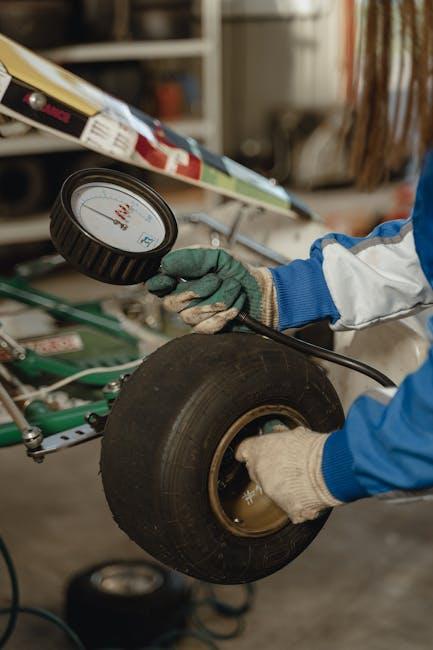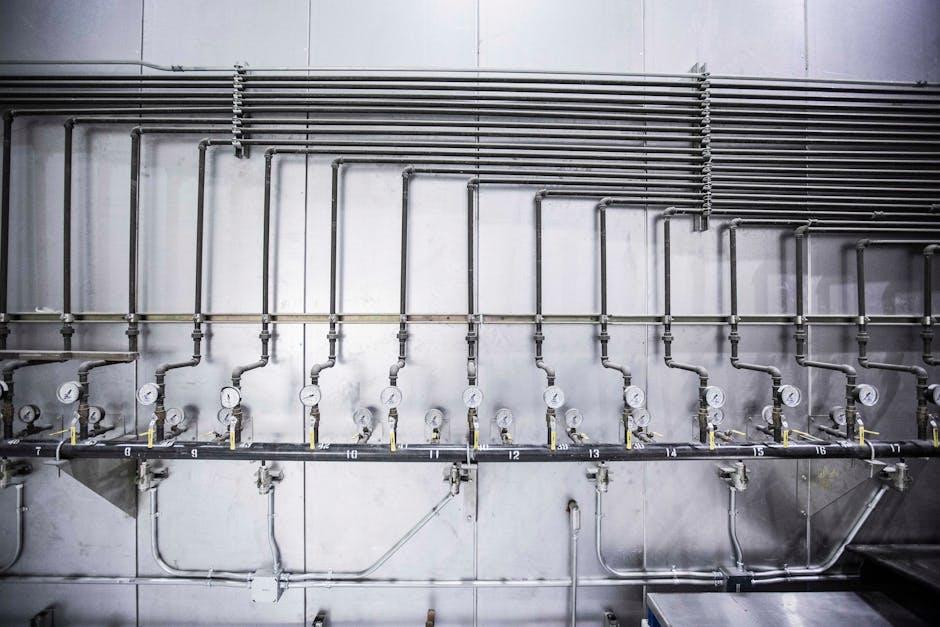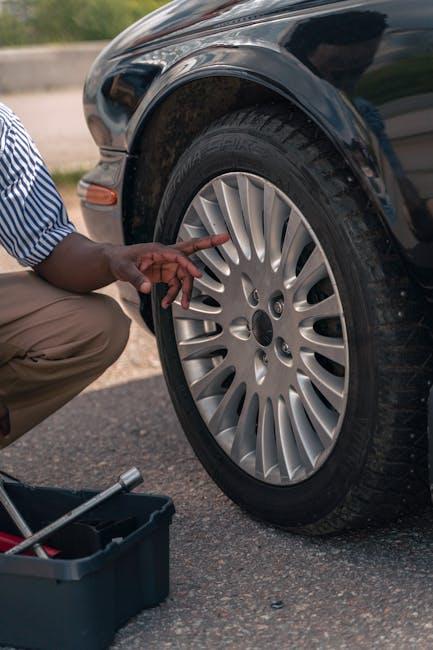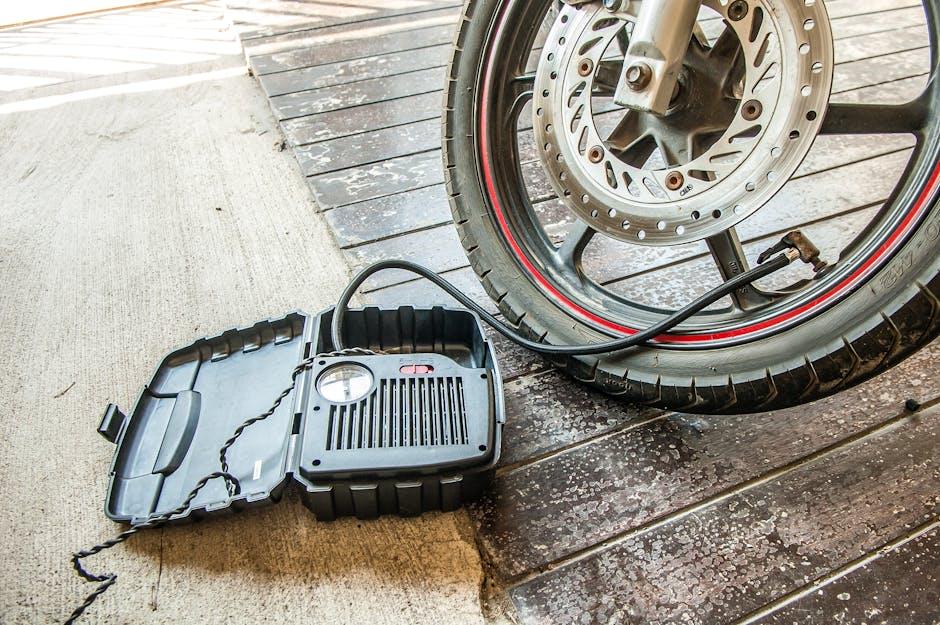Tire pressure might seem like a small detail, easily overlooked in the grand scheme of vehicle maintenance. Yet, it plays a pivotal role in ensuring your safety, enhancing fuel efficiency, and prolonging the life of your tires. Knowing how to check tire pressure correctly transforms a simple routine into a powerful habit that keeps you rolling smoothly on every journey. In this article, we will guide you step-by-step through the essentials of accurate tire pressure measurement—empowering you to take control of your ride with confidence and precision.
Table of Contents
- Understanding the Importance of Proper Tire Pressure
- Choosing the Right Tire Pressure for Your Vehicle
- Tools and Techniques for Accurate Tire Pressure Measurement
- Step-by-Step Guide to Checking Tire Pressure Safely
- Common Mistakes to Avoid When Measuring Tire Pressure
- Maintaining Optimal Tire Pressure for Longevity and Safety
- Q&A
- The Way Forward

Understanding the Importance of Proper Tire Pressure
Maintaining the correct tire pressure is crucial for several key reasons that extend beyond simply avoiding flat tires. Proper inflation improves fuel efficiency by reducing rolling resistance, which means your engine doesn’t have to work as hard. It also ensures optimal contact between the tire and the road, enhancing traction, handling, and overall safety. Underinflated tires can cause excessive heat buildup, leading to premature tire wear or even blowouts, while overinflated tires may result in a harsher ride and uneven wear patterns.
Regularly checking tire pressure can also save you money in the long run and contribute to environmental sustainability by lowering CO2 emissions. Here are some essential points to keep in mind for maintaining ideal tire pressure:
- Check when tires are cold: Tire pressure should be measured before driving or after the vehicle has been parked for at least three hours.
- Use a reliable pressure gauge: Digital or dial-type gauges provide more accurate readings than the typical stick gauges found at gas stations.
- Follow the manufacturer’s recommended PSI: This information is usually found on the driver’s side door jamb or in the owner’s manual.
| Condition | Potential Risk | Best Action |
|---|---|---|
| Underinflated | Increased tire wear, lower fuel efficiency | Inflate to recommended PSI |
| Overinflated | Reduced traction, uneven wear | Release air to correct PSI |
| Properly Inflated | Optimal performance and safety | Check monthly |

Choosing the Right Tire Pressure for Your Vehicle
Finding the perfect tire pressure is vital for a smooth and safe driving experience. Each vehicle has a manufacturer-recommended pressure range, usually found inside the driver’s door jamb or in your owner’s manual. Maintaining pressures within this range helps optimize fuel efficiency, tire lifespan, and handling performance. Over-inflated tires can cause a harsh ride and uneven tire wear concentrated in the center tread, while under-inflated tires increase rolling resistance and heat, leading to premature wear and reduced gas mileage.
When adjusting tire pressure, keep these professional tips in mind:
- Check cold tires: Always measure when tires are cold, as heat from driving can raise pressure readings artificially.
- Use a reliable gauge: Invest in a quality digital or dial pressure gauge for accurate results.
- Adjust in small increments: Inflate or deflate in small steps and recheck to find the sweet spot.
| Vehicle Type | Recommended PSI | Typical Impact |
|---|---|---|
| Compact Cars | 32-35 PSI | Balanced ride and efficiency |
| SUVs & Crossovers | 35-40 PSI | Optimizes load handling |
| Trucks | 40-50 PSI | Supports heavy payloads |

Tools and Techniques for Accurate Tire Pressure Measurement
To achieve precise tire pressure readings, start by selecting the right instrument. Digital tire pressure gauges are highly recommended for their accuracy and ease of use, offering instant readings with minimal effort. For those who prefer a more traditional approach, dial gauges provide reliable measurements, though they require proper calibration and a steady hand. Additionally, some vehicles feature built-in TPMS (Tire Pressure Monitoring Systems), which continuously alert you to pressure changes, but these should be verified periodically with a manual gauge for complete confidence.
Mastering the technique is just as crucial as the tool itself. Always check your tire pressure when the tires are cold, ideally before driving or after the vehicle has been parked for several hours, to avoid pressure variations due to heat. Maintain a firm and perpendicular angle when attaching the gauge to the valve stem to prevent air leaks and ensure consistent readings. For added convenience, consider using gauges with a backlit display or those designed with a flexible hose, which enable easier access to the valve in tight spaces.
| Tool | Best Use | Pros | Cons |
|---|---|---|---|
| Digital Gauge | Quick, accurate readings | Easy to read, portable | Battery required |
| Dial Gauge | Durable, traditional | No batteries, reliable | Needs calibration |
| TPMS | Real-time monitoring | Automatic alerts | Verify with manual gauge |

Step-by-Step Guide to Checking Tire Pressure Safely
Begin by gathering the necessary tools: a reliable tire pressure gauge, preferably digital for accuracy, and your vehicle’s recommended tire pressure information, usually found on the driver’s door jamb or in the owner’s manual. Always check the tire pressure when the tires are cold, ideally after the car has been parked for at least three hours, to ensure the most precise reading. Remove the valve cap carefully, press the gauge firmly onto the valve stem until the hissing sound stops, and note the pressure indicated. Repeat this on all four tires, including the spare if your vehicle has one.
Next, compare your readings to the manufacturer’s recommended pressure. If the tires need air, use an air compressor or visit a service station to add the correct amount. Should the pressure be too high, press the valve stem center to release air gradually. Keeping tire pressure balanced enhances safety, fuel efficiency, and tire longevity. For quick reference, here’s a simple chart showcasing common passenger car tire pressures:
| Vehicle Type | Front Tires (psi) | Rear Tires (psi) |
|---|---|---|
| Sedan | 32-35 | 30-33 |
| Compact | 30-32 | 28-30 |
| SUV | 35-38 | 33-36 |

Common Mistakes to Avoid When Measuring Tire Pressure
One of the biggest pitfalls is checking tire pressure when tires are hot. After driving, the tires heat up and the air inside expands, resulting in a falsely high reading. Always measure your tire pressure when the tires are cold—ideally after the vehicle has been parked for at least three hours, or early in the morning before starting. Another common slip-up is relying solely on the vehicle’s dashboard warning light, which typically activates only when tire pressure drops significantly low, missing gradual deflation that can still impact safety and fuel efficiency.
- Forgetting to include the spare tire: Many overlook the spare, but it’s critical to keep it properly inflated for emergencies.
- Using the wrong pressure unit: PSI is the most common, but discrepancies can occur if you confuse it with bar or kPa. Always check the recommended unit.
- Not calibrating your gauge: Inaccurate gauges lead to incorrect readings. Occasionally verify your gauge against a professional station’s equipment.

Maintaining Optimal Tire Pressure for Longevity and Safety
Keeping your tires inflated to the ideal level is more than just a maintenance routine—it’s a crucial factor in extending the lifespan of your tires and ensuring your safety on the road. When pressures are too low, tires tend to wear unevenly and generate excess heat, which can lead to blowouts. On the other hand, overinflation reduces the tire’s contact patch with the road, compromising traction and causing a harsher ride. To avoid these risks, regularly monitor pressures with a reliable gauge and adjust according to the specifications outlined in your vehicle’s manual or on the driver’s door jamb sticker.
For precision and ease, remember the essentials when checking your tire pressure:
- Check when tires are cold – ideally before driving, to get an accurate reading.
- Use a quality gauge – digital or high-grade mechanical gauges provide better accuracy than those at gas stations.
- Inspect all four tires plus the spare, even if it’s rarely used.
- Adjust pressure in small increments to avoid over-inflation.
| Tire Condition | Recommended Action |
|---|---|
| Low Pressure (< 30 PSI) | Inflate to recommended levels immediately |
| Optimal Pressure (30-35 PSI) | Maintain and check monthly |
| High Pressure (> 36 PSI) | Release air carefully to recommended PSI |
Q&A
Q: Why is checking tire pressure important?
A: Proper tire pressure ensures safer driving, better fuel efficiency, and prolonged tire life. Underinflated tires can lead to poor handling and increased wear, while overinflated tires might reduce traction and cause uneven tread wear.
Q: How often should I check my tire pressure?
A: It’s best to check your tire pressure at least once a month and before any long road trips. Tires naturally lose pressure over time, so regular checks help maintain optimal performance.
Q: What tools do I need to check tire pressure?
A: A simple tire pressure gauge—digital or analog—is all you need. Many gas stations have air pumps equipped with built-in gauges, but a personal gauge provides the most accurate reading.
Q: When is the best time to check tire pressure?
A: Check your tires when they are cold, ideally after the car has been parked for at least three hours. Driving heats up tires and temporarily increases pressure, giving a false high reading.
Q: How do I find the recommended tire pressure for my vehicle?
A: Look for a sticker inside the driver’s door jamb or consult your owner’s manual. This recommendation is tailored for your car’s ideal balance of comfort, handling, and efficiency.
Q: What’s the correct way to measure tire pressure?
A: Remove the valve cap from the tire, press the gauge firmly onto the valve stem, and note the reading. If air hisses out, reposition the gauge for a better seal. Repeat for all tires, including the spare if applicable.
Q: Can I rely on the pressure shown on my car’s dashboard?
A: Your Tire Pressure Monitoring System (TPMS) alerts you when pressure is significantly low, but it doesn’t replace manual checks. TPMS sensors often tolerate minor pressure fluctuations, so manual measurement is more precise.
Q: What should I do if my tires are underinflated?
A: Inflate them to the recommended PSI using an air compressor. Most service stations have air hoses with built-in gauges. Don’t forget to recheck pressure after inflating to avoid overinflation.
Q: Does temperature affect tire pressure?
A: Yes! Tire pressure can drop about 1 PSI for every 10°F (5.5°C) decrease in temperature. This is why checking pressure more frequently in colder months is crucial.
Q: Is it safe to drive with low tire pressure?
A: Driving on underinflated tires can be dangerous. It increases the risk of blowouts, reduces fuel efficiency, and compromises vehicle stability. Always address low pressure promptly.
By mastering the art of checking tire pressure, you keep your rides smooth, safe, and efficient—one perfect PSI at a time.
The Way Forward
In the end, checking your tire pressure isn’t just a routine chore—it’s a simple act that keeps your journey safe, smooth, and efficient. By dedicating a few moments to this small but mighty task, you ensure your tires perform at their best, your fuel goes further, and every mile is met with confidence. So, next time you grab that gauge, remember: you’re not just measuring air—you’re taking charge of the road ahead.

